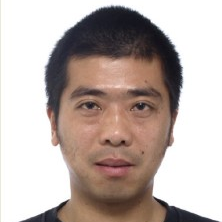Advances in Photonic Crystals and Devices
A special issue of Crystals (ISSN 2073-4352). This special issue belongs to the section "Inorganic Crystalline Materials".
Deadline for manuscript submissions: closed (10 December 2023) | Viewed by 3142
Special Issue Editors
Interests: photonic crystals; photonic crystal devices; nanotechnology; optics physics; theoretical models
Interests: photonic crystals; metamaterials; plasmonics; low-dimensional materials
Special Issue Information
Dear Colleagues,
The field of photonic crystals (PhCs) based on artificial nanostructures is a booming area of optics that has attracted much attention from experimental and theoretical chemists and physicists since its discovery in 1987 by John and Yablonovitch. In recent decades, the exciting physical and chemical phenomena of PhCs have been widely predicted and researched. More reliable and precise PhC devices are continuously being proposed because of new developments in advanced nanofabrication technology. Extensive applications based on PhCs have emerged, including PhC fibers, white light sources, tunable filters, PhC quantum dot lasers, and PhC quantum cascade lasers. However, most of the PhC devices have optical properties which cannot be actively tuned. Are there other cases for tunable photonic crystal devices? For instance, can we tune the optical properties of PhC devices through applied mechanical force, or through an external field? Answering these questions will help PhC devices meet the requirements of society. The present Special Issue on “Active Photonic Crystals and Devices” may become a timely report, summarizing the current progress in the field of tunable PhC devices achieved in recent years.
Dr. Xiaolong Zhu
Dr. Weihua Wang
Prof. Dr. Dezhuan Han
Guest Editors
Manuscript Submission Information
Manuscripts should be submitted online at www.mdpi.com by registering and logging in to this website. Once you are registered, click here to go to the submission form. Manuscripts can be submitted until the deadline. All submissions that pass pre-check are peer-reviewed. Accepted papers will be published continuously in the journal (as soon as accepted) and will be listed together on the special issue website. Research articles, review articles as well as short communications are invited. For planned papers, a title and short abstract (about 100 words) can be sent to the Editorial Office for announcement on this website.
Submitted manuscripts should not have been published previously, nor be under consideration for publication elsewhere (except conference proceedings papers). All manuscripts are thoroughly refereed through a single-blind peer-review process. A guide for authors and other relevant information for submission of manuscripts is available on the Instructions for Authors page. Crystals is an international peer-reviewed open access monthly journal published by MDPI.
Please visit the Instructions for Authors page before submitting a manuscript. The Article Processing Charge (APC) for publication in this open access journal is 2600 CHF (Swiss Francs). Submitted papers should be well formatted and use good English. Authors may use MDPI's English editing service prior to publication or during author revisions.
Keywords
- photonic crystals
- photonic band structure
- photonic crystal devices
- high-quality factor
- nonlinear optics
- optical properties
- transport properties
- theoretical models







